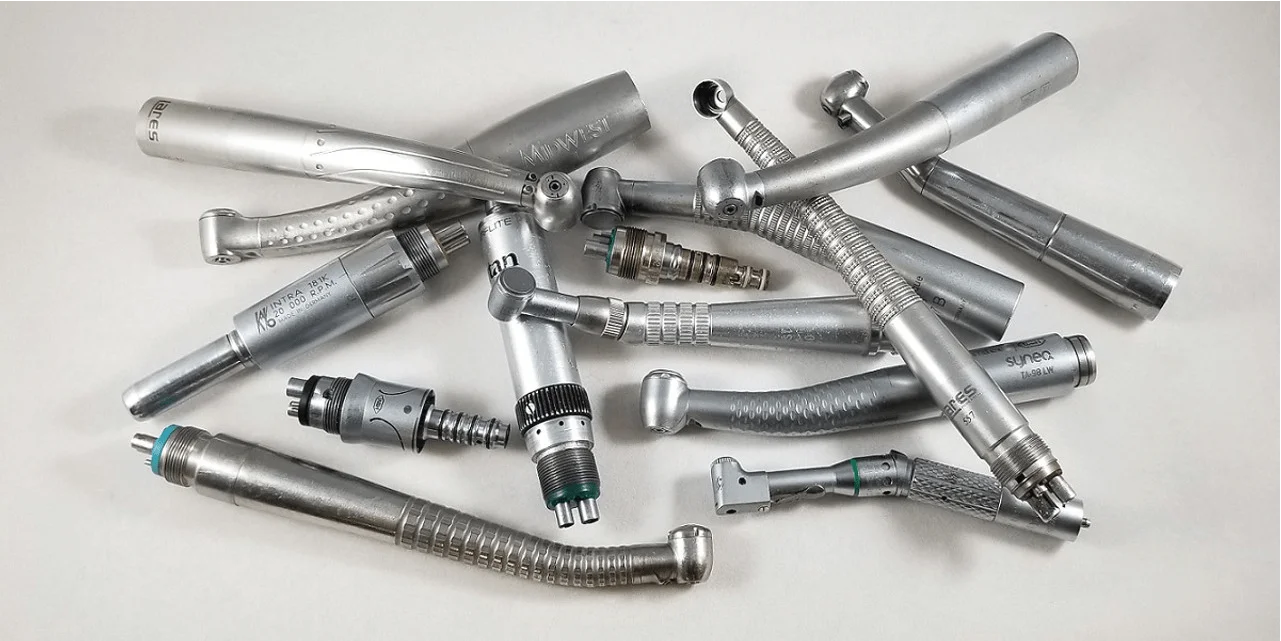Dental Handpiece Sterilization: Ensuring Safety and Hygiene in Every Procedure

When it comes to providing high-quality dental care, patient safety is paramount. One of the most critical aspects of dental hygiene and safety involves the sterilization of dental instruments, particularly dental handpieces. Dental handpieces are essential tools used by dental professionals during a variety of procedures, from routine cleanings to complex surgeries. Ensuring these tools are properly sterilized is vital in preventing cross-contamination and safeguarding the health of both patients and dental staff.
In this article, we will explore the importance of dental handpiece sterilization, the methods used to sterilize handpieces, and why maintaining proper sterilization protocols is essential for any dental practice.
Why Dental Handpiece Sterilization is Crucial
Dental handpieces are in constant contact with a patient’s oral cavity, making them susceptible to contamination with harmful pathogens such as bacteria, viruses, and fungi. The use of contaminated handpieces can lead to the spread of infectious diseases, including bloodborne pathogens like Hepatitis B, Hepatitis C, and HIV. Additionally, the presence of oral bacteria on handpieces can also result in post-procedure infections, compromising the patient’s recovery process.
Proper sterilization of dental handpieces is a critical measure to:
-
Prevent the transmission of infections: Dental handpieces come into contact with saliva, blood, and tissues, which makes them prime candidates for bacterial and viral contamination. Sterilization eliminates these pathogens and ensures the safety of both patients and dental professionals.
-
Ensure compliance with health regulations: Health and safety standards, including those set by the Centers for Disease Control and Prevention (CDC) and the Occupational Safety and Health Administration (OSHA), require dental practices to follow strict sterilization protocols to protect public health.
-
Maintain the longevity and performance of handpieces: Regular sterilization and maintenance help preserve the functionality of dental handpieces, ensuring their longevity and optimal performance.
Methods of Sterilizing Dental Handpieces
Dental handpieces require thorough sterilization to remove all microbial life. Below are the most commonly used sterilization methods for dental handpieces:
1. Autoclaving (Steam Sterilization)
Autoclaving is one of the most widely used sterilization methods in dental practices. It uses high-pressure steam to kill microorganisms on dental handpieces and other instruments. Autoclaving is highly effective at sterilizing handpieces made of metal and other heat-resistant materials.
Steps in autoclaving dental handpieces:
-
Pre-cleaning: Handpieces must first be cleaned to remove visible debris and organic material.
-
Packaging: Handpieces are then packaged in sterilization pouches or wraps to prevent contamination after sterilization.
-
Sterilization cycle: The autoclave runs a cycle of pressurized steam at temperatures typically ranging from 250°F (121°C) to 270°F (132°C) for 15 to 30 minutes.
-
Drying: Once the sterilization cycle is complete, handpieces must be properly dried before being removed.
2. Dry Heat Sterilization
Dry heat sterilization is an alternative to autoclaving and is used for heat-resistant handpieces. This method uses hot air circulated at high temperatures (usually 320°F or 160°C) to kill bacteria and other pathogens. While effective, dry heat sterilization takes longer than autoclaving and may not be suitable for all types of handpieces.
Key points:
-
Dry heat sterilization is typically used for items that cannot withstand moisture or pressure.
-
It is less commonly used for dental handpieces due to the longer cycle times required.
3. Chemical Sterilization
Chemical sterilization involves using chemical solutions, such as glutaraldehyde or hydrogen peroxide, to disinfect dental handpieces. While this method can be effective, it is generally not the preferred method for sterilizing handpieces due to the time required for immersion and the potential for damage to the tools.
Important considerations:
-
Chemical sterilization is typically used for handpieces that cannot be sterilized via autoclaving or dry heat.
-
Adequate ventilation and proper handling of chemicals are essential when using this method.
Best Practices for Dental Handpiece Sterilization
Proper sterilization is not just about the method used; it also involves following best practices to ensure the highest level of safety. Here are some essential practices to follow:
-
Follow manufacturer guidelines: Always consult the manufacturer’s instructions for cleaning and sterilizing specific handpieces. Different types of handpieces may have unique requirements.
-
Pre-cleaning: Before sterilization, handpieces should be cleaned thoroughly using an enzymatic cleaner to remove debris, blood, and saliva. This is crucial for ensuring the sterilization process is effective.
-
Regular maintenance: In addition to sterilization, dental handpieces need regular maintenance. This includes lubrication to prevent wear and tear, ensuring proper function, and prolonging the lifespan of the handpiece.
-
Track sterilization cycles: Keep a record of each sterilization cycle, including the date, cycle time, and operator. This ensures accountability and helps track sterilization history for compliance and audits.
-
Use appropriate packaging: After cleaning and sterilizing, handpieces should be stored in sterile packaging to prevent re-contamination before use.
Conclusion
Dental handpiece sterilization is a critical component of infection control in dental practices. Adhering to proper sterilization techniques helps ensure the safety of patients and dental professionals alike, while maintaining the functionality and longevity of valuable dental equipment. By implementing strict sterilization protocols, following manufacturer guidelines, and using effective sterilization methods, dental practices can safeguard against the risks associated with contaminated tools and maintain a high standard of care.
- Questions and Answers
- Opinion
- Motivational and Inspiring Story
- Technology
- Live and Let live
- Focus
- Geopolitics
- Military-Arms/Equipment
- Segurança
- Economy/Economic
- Beasts of Nations
- Machine Tools-The “Mother Industry”
- Art
- Causes
- Crafts
- Dance
- Drinks
- Film/Movie
- Fitness
- Food
- Jogos
- Gardening
- Health
- Início
- Literature
- Music
- Networking
- Outro
- Party
- Religion
- Shopping
- Sports
- Theater
- Health and Wellness
- News
- Culture

